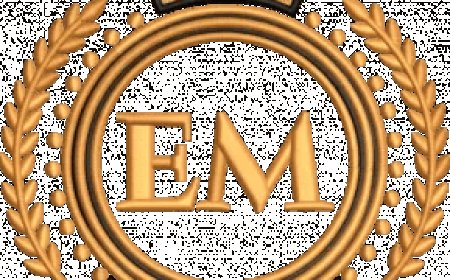ISO 14001 Certification: Achieve Excellence in Environmental Management
ISO 14001 Certification

I. Introduction
A. Definition of ISO 14001 Certification
ISO 14001 certification signifies adherence to international standards for environmental management. It provides a framework for organizations to establish, implement, maintain, and continually improve environmental management systems. Developed by the International Organization for Standardization (ISO), ISO 14001 sets out requirements for effectively managing environmental aspects, reducing environmental impacts, and demonstrating a commitment to sustainability. This certification is applicable to organizations of all sizes and sectors, aiming to minimize their environmental footprint, comply with legal obligations, and meet stakeholder expectations for responsible environmental stewardship.
II. Steps to Achieve ISO 14001 Certification
A. Initial environmental review and gap analysis
Achieving ISO 14001 certification begins with conducting an initial environmental review and gap analysis. This involves assessing the organization's current environmental performance, identifying potential environmental aspects and impacts, and evaluating existing environmental management practices against ISO 14001 requirements. The initial review provides insights into areas where the organization is already meeting standards and areas that require improvement to align with ISO 14001.
B. Establishing an environmental management system (EMS)
Following the initial review and gap analysis, organizations embark on the crucial task of establishing an Environmental Management System (EMS). At the heart of the EMS lies a structured framework designed to systematically manage environmental aspects, mitigate risks, and seize opportunities for improvement. This entails defining roles, responsibilities, and processes to ensure effective implementation of environmental policies and objectives. Central to the EMS is the development of documented procedures and protocols tailored to the organization's unique environmental context. This may include establishing protocols for waste management, energy conservation, and pollution prevention.
C. Setting Environmental Objectives and Targets
With the EMS in place, organizations proceed to set environmental objectives and targets that align with their overarching sustainability goals. This involves identifying specific areas for improvement and defining measurable targets to gauge progress towards environmental performance objectives. Objectives may encompass a range of focus areas, such as reducing carbon emissions, minimizing water usage, or enhancing biodiversity conservation efforts. Crucially, environmental objectives and targets should be SMART—Specific, Measurable, Achievable, Relevant, and Time-bound. By establishing clear benchmarks for success, organizations can track their performance, identify areas requiring attention, and demonstrate continuous improvement over time.
III. Overcoming Challenges in ISO 14001 Implementation
A. Resource Constraints and Management Commitment
One of the primary hurdles encountered during ISO 14001 implementation is navigating resource constraints while securing unwavering management commitment. Limited financial resources, time constraints, and competing priorities can pose significant challenges to the successful adoption of environmental management practices. Overcoming these obstacles requires proactive resource allocation and effective communication to garner buy-in from organizational leadership. Management commitment is essential for fostering a culture of sustainability and ensuring the allocation of necessary resources for ISO 14001 implementation. Leaders must recognize the strategic importance of environmental management and its alignment with broader business objectives.
B. Employee Engagement and Participation
Another critical aspect of ISO 14001 implementation involves fostering employee engagement and participation at all levels of the organization. Engaged employees serve as ambassadors for environmental stewardship, driving the successful implementation and continuous improvement of environmental management practices. However, achieving widespread employee buy-in requires proactive communication, training, and involvement in decision-making processes. Effective communication strategies are essential for conveying the importance of ISO 14001 compliance and soliciting input from employees regarding environmental initiatives. Providing training and educational opportunities empowers staff to understand their roles in supporting environmental objectives and fosters a sense of ownership over sustainability efforts.
C. Integration with Existing Management Systems
Integrating ISO 14001 requirements with existing management systems presents another challenge for organizations seeking certification. Many businesses already operate under established quality, health, safety, and environmental management systems, necessitating harmonization to avoid duplication of efforts and streamline processes. Achieving seamless integration requires a systematic approach and careful consideration of organizational structures and processes. Harmonizing ISO 14001 with existing management systems involves identifying synergies and aligning objectives, procedures, and documentation to minimize redundancy and optimize efficiency. Cross-functional collaboration is essential for ensuring that environmental management practices complement and enhance existing operational frameworks.
IV. ISO 14001 Certification and Green Supply Chain Management
A. Integrating Environmental Considerations into Supply Chain Processes
Incorporating environmental considerations into supply chain processes is paramount for organizations aiming to align with ISO 14001 standards and foster sustainable practices. This involves evaluating the entire supply chain ecosystem, from raw material sourcing to product distribution, to identify opportunities for minimizing environmental impact.By assessing factors such as energy consumption, emissions, waste generation, and transportation logistics, businesses can pinpoint areas where efficiency improvements and environmental stewardship initiatives can be implemented.Integrating environmental considerations into supply chain processes necessitates collaboration with suppliers, subcontractors, and logistics partners to ensure alignment with sustainability objectives.
B. Implementing Sustainable Sourcing and Procurement Practices
Implementing sustainable sourcing and procurement practices is essential for organizations seeking ISO 14001 certification and aspiring to enhance their green supply chain management efforts.Sustainable sourcing involves selecting suppliers and materials that prioritize environmental responsibility, ethical labor practices, and social sustainability.This may entail conducting supplier assessments to evaluate compliance with environmental standards, certifications, and codes of conduct.Procurement practices play a crucial role in driving sustainability across the supply chain by emphasizing the purchase of environmentally preferable products and materials.Organizations can leverage procurement policies to prioritize products with lower environmental impacts, such as those made from recycled materials, certified sustainable sources, or with reduced packaging waste.
C. Collaborating with Suppliers to Reduce Environmental Impact
Collaborating with suppliers to reduce environmental impact is a cornerstone of effective green supply chain management and ISO 14001 certification. Recognizing the interconnected nature of supply chain operations, organizations must engage with suppliers as strategic partners in driving sustainability initiatives. This involves open communication, mutual goal-setting, and knowledge sharing to identify opportunities for collective action and continuous improvement. Collaborative efforts with suppliers may include joint projects aimed at optimizing transportation routes to reduce emissions, implementing energy-efficient manufacturing processes, or developing sustainable packaging solutions. By fostering a culture of collaboration and transparency, organizations can leverage the expertise and resources of their suppliers to achieve shared environmental objectives.
V. ISO 14001 Certification and Sustainable Product Design
A. Incorporating Environmental Considerations into Product Design and Development
Integrating environmental considerations into product design and development processes is pivotal for organizations committed to achieving ISO 14001 certification and fostering sustainable practices.This entails embedding environmental criteria into the earliest stages of product conceptualization, ensuring that environmental impacts are systematically addressed throughout the design lifecycle.By considering factors such as material selection, energy efficiency, recyclability, and end-of-life disposal, organizations can minimize environmental footprints while enhancing product performance and value.
B. Implementing Eco-Design Principles to Minimize Environmental Impact
Implementing eco-design principles is a cornerstone of sustainable product development and ISO 14001 certification. Eco-design focuses on optimizing product performance while minimizing environmental impacts across the entire product lifecycle—from raw material extraction to end-of-life disposal.This involves employing strategies such as material substitution, design for disassembly, and energy-efficient manufacturing techniques to reduce resource consumption, emissions, and waste generation. Adopting eco-design principles requires a shift towards holistic thinking and consideration of the broader environmental implications of product design decisions. Organizations must prioritize the selection of environmentally preferable materials, processes, and technologies that align with sustainability objectives.
VI. Conclusion
A. Recap of Key Points Discussed
Throughout this discourse, we have traversed the landscape of ISO 14001 certification, exploring its significance in shaping environmentally responsible business practices. Our journey began with an initial environmental review and gap analysis, followed by the establishment of an Environmental Management System (EMS) and the setting of environmental objectives and targets.We then navigated the challenges of implementation, from resource constraints and management commitment to employee engagement and integration with existing management systems.Furthermore, we delved into the intersection of ISO 14001 certification with green supply chain management and sustainable product design, highlighting the importance of holistic approaches to environmental stewardship.
B. Encouragement for Organizations to Pursue ISO 14001 Certification for Long-term Environmental Stewardship
As we conclude, I extend a resounding encouragement to organizations to embark on the journey towards ISO 14001 certification for enduring environmental stewardship.Embracing ISO 14001 standards empowers organizations to proactively manage environmental risks, seize opportunities for sustainable growth, and contribute to a more resilient and equitable future for generations to come.By embracing ISO 14001 certification, organizations not only fulfill their corporate social responsibility but also position themselves as leaders in environmental excellence, driving positive change and inspiring others to follow suit.Together, let us forge a path towards a more sustainable and prosperous world, guided by the principles of ISO 14001 certification and unwavering commitment to environmental stewardship.
What's Your Reaction?















![Prima Ease CBD Gummies [I've Tested] TRUTH EXPOSED!](https://news.bangboxonline.com/uploads/images/202412/image_430x256_6766ac778f8ee.jpg)








